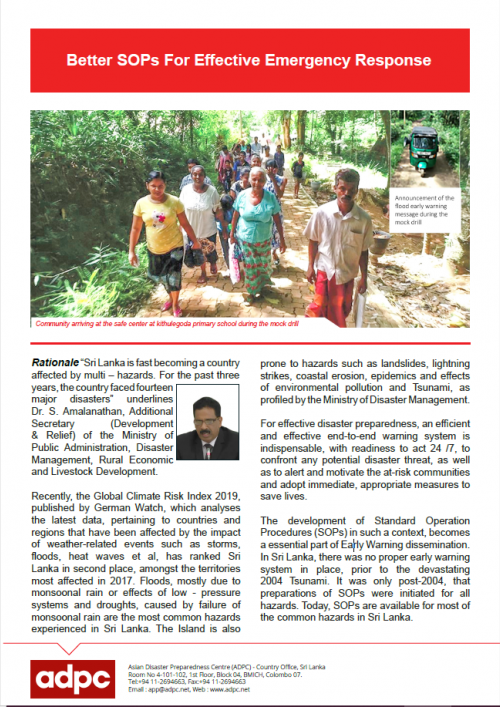For effective disaster preparedness, an efficient and effective end-to-end warning system is indispensable. From having readiness to act 24/7 on any potential disaster threat, as well as to alert and motivate the at-risk communities, adopting immediate, appropriate measures to
save lives, the development of Standard Operation Procedures (SOPs) in such a context, becomes an essential part of Early Warning dissemination. In Sri Lanka, there was no proper early warning system in place, prior to the devastating 2004 Tsunami. It was only post-2004, that preparations of SOPs were initiated for all hazards. Today, SOPs are available for most of the common hazards in Sri Lanka.
Under the initiative of the Sri Lanka Preparedness Partnership (SLPP), the importance of review and update of existing SOPs has been duly recognized by the government. The SLPP, the national chapter of the Asian Preparedness Partnership, was established in six countries to enhance the preparedness and capacity for emergency response in South Asia and South-East Asia. The task of reviewing and updating SOPs has been undertaken by Disaster Management Centre in collaboration with the Asian Disaster Preparedness Centre and Janathakshan (Gte) Ltd. This case-study documents the process of undertaking updation of SOPs in the country with insights from the partners on building local capacities for emergency response and preparedness.
